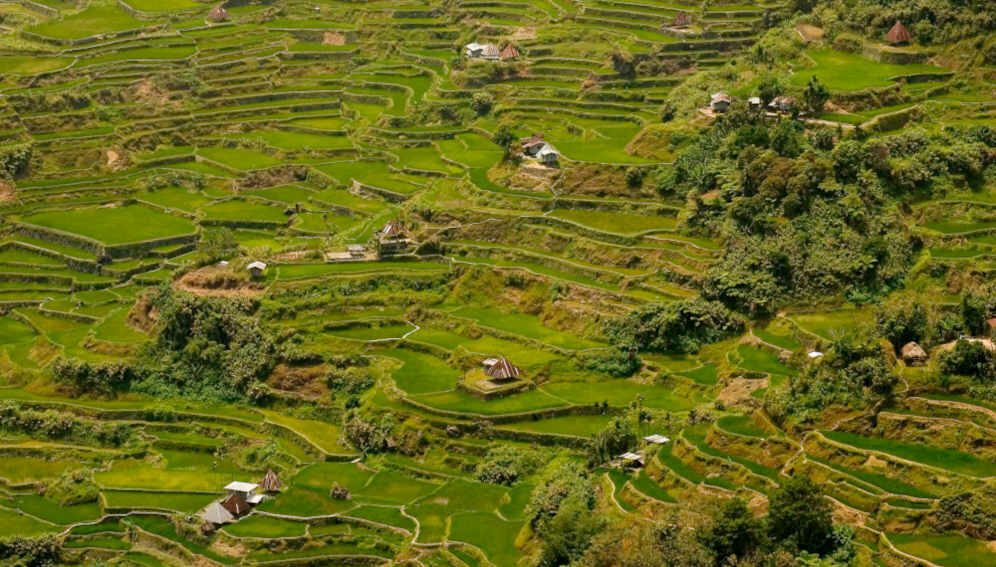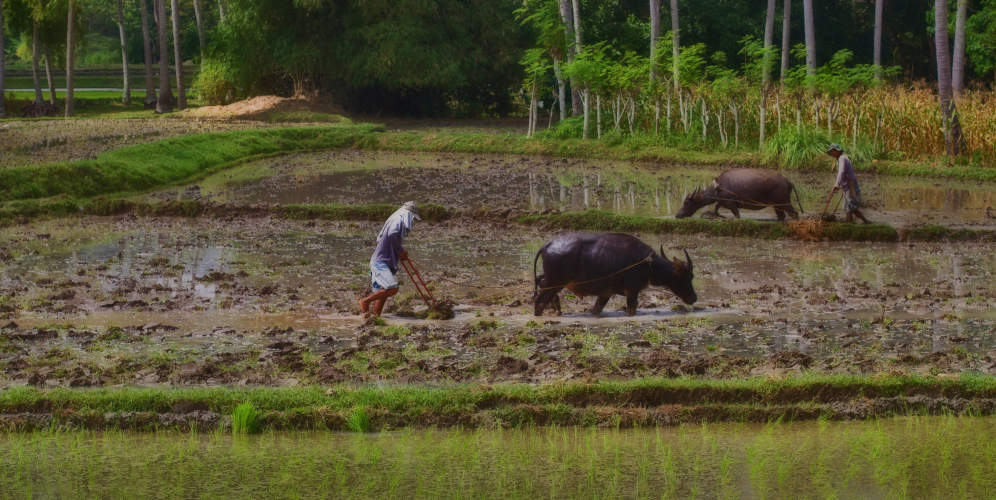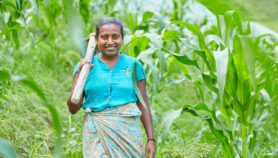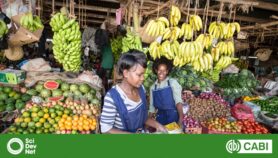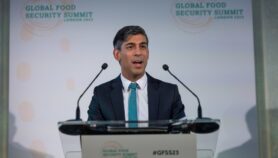By: Melanie Sison
Send to a friend
The details you provide on this page will not be used to send unsolicited email, and will not be sold to a 3rd party. See privacy policy.
Modern science and traditional knowledge could save ancient rice terraces and heirloom varieties, says Eulalie Dulnuan.
The ancient rice terraces in the Philippines’ Ifugao province blend agriculture, environment, and indigenous practices with science. Built and maintained by the indigenous farmers of Ifugao, these were recognised as a World Heritage Site by UNESCO in 1995 and as a place of agricultural heritage by the Food and Agriculture Organization in 2011.
The community is now looking for ways to conserve their agricultural way of life in the face of modern challenges, alongside age-old issues faced by farmers, such as pests.
A member of the Tuwali group of Ifugaos, Eulalie Dulnuan is a researcher who has conducted studies on the Ifugao rice terraces and teaches at the Ifugao State University. She is also the director of the Center for Ifugao Rice Terraces as Globally Important Agricultural Heritage Systems and the project manager of the International Indigenous Knowledge Innovation Center.
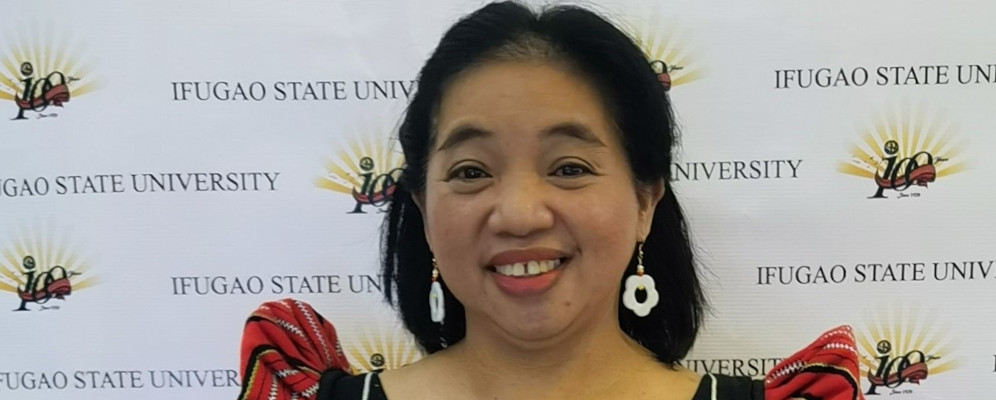
Eulalie Dulnuan, researcher and teacher at the Ifugao State University. Copyright: Courtesy of Dulnuan
Dulnuan tells SciDev.Net that communities can benefit from learning from both their indigenous practices and science-based approaches to ensure food security.
The Ifugao Rice Terraces are internationally recognised. Based on your organisation’s research, what needs to be done to protect them to help ensure food security?
The combined effects of agricultural modernisation, tourism, and urbanisation resulted in the transformation of the Ifugao agricultural landscape. The IFSU GIAHS Center has produced more than 100 research studies focused on the issues and challenges faced by the rice terrace communities. These studies are done by community members i.e. weavers, tour guides, teachers, farmers, local government employees, and other sectors. The topics include indigenous peoples’ education, agritourism, poultry, blacksmithing, pest management and rice brewing.
An underlying recommendation for the protection of the rice terraces is to preserve the living rice culture. Further changes of the rice terraces can be minimised by reviving and revitalising traditional resource management systems. Preservation would best be done through education of the new generations. Incorporating indigenous knowledge, systems and practices in the curriculum of primary and secondary school learners is a strategy used in one of the training programmes of the GIAHS Center.
How do indigenous practices and science-based farming play out in indigenous farming communities? And what needs to be done to make heirloom rice more accessible?
Communities could benefit from indigenous practices and science-based farming. Both approaches should be able to ensure food security. However, certain practices would be an antithesis of the other — in some cases, modern farming practices would be detrimental to traditional and indigenous ones.
One such instance is the introduction of modern rice varieties, which led to the loss of traditional varieties. In Banaue, Ifugao, only 17 of the 28 varieties are still in existence. Meanwhile, seven traditional rice varieties were lost from the Nagacadan (Kiangan) area.
The decline could partly be attributed to the growing preference for higher yielding varieties. In Kiangan, the percentage of farmers that till traditional rice varieties is 47 per cent, and those who prefer the hybrid varieties is 40 per cent. There are 13 per cent of farmers who use both hybrid and traditional varieties.



Rice bundles in Ifugao. Image credit: Melanie Sison.
The heirloom rice is very nutritious. Farmers that till hybrid rice rely heavily on inorganic fertilisers and pesticides. Those using traditional varieties skip artificial enrichers and rely on the age-long practice of increasing fertility of the soil by burying rice stubbles during the fallow period and trampling into the soil the sunflower plant.
The traditional knowledge and the ecosystems of the Ifugao rice terraces’ social-ecological system are a result of a long-term coevolution. However, science-based technologies could enhance and bring production yields to a new level. An example is introducing to Ifugao farmers the concept of early rice transplanting, which contrasts with the traditional process. However, this method brings in three to four times more tillers [the branches that bear grains] that produce more grains.
Another example is the use of soil chemical tests to determine the deficiencies of the soil. While traditional practices are very effective in enriching the soil, knowing the exact deficiency would prevent certain diseases. Zinc deficiency often occurs because the rice fields are always flooded, and soil tests would help the farmer know when to fix the deficiency.
Indigenous and traditional farming practices include the tending of livestock. With science-based farming, services from the livestock could be maximised. Introducing ducks into the rice fields at the right time would help aerate the soil to make for more robust rice plants.
The Ifugao rice terraces have become a popular tourist destination. Is there a link between agritourism and food security for the people in Ifugao? How do farmers balance agritourism with farming practices?
Tourism is an effective job generator, providing opportunities for community members to earn more income. Farmers could earn income as tour guides, porters or tricycle drivers. With agritourism, tourists take a more active role rather than just gazing at the landscape. Trying their hand in stone walling, for example, is a novel way of interacting with the rice terraces. In the fallow period, the farmer could offer to tourists the unique experience of wallowing in the rice paddy as they try their hand at land preparation.
How important is the role of women in farming communities?
Women play a very important role in highland rice farming. The production and quality of a rice crop depends much on the quality of the rice seeds. The responsibility of seed selection belongs to a select group of women who have had long experience and a reputation for being skilled seed selectors. The special care being devoted by women to seed selection may explain the high degree of uniformity within a variety, as well as the preservation of local varieties.
Women are distinctly involved during transplanting, replanting, weeding and harvesting. Both men and women are invariably present for all the other tasks in the production cycle, depending on the other commitments for household labour in specific communities. However, when men periodically out-migrate in order to earn extra income, or focus on other livelihood options (tourism), women devote more time on the farm and assume the primary role in securing supplemental food for the family and animals.
The involvement of women in the food production should lead to their involvement in planning and decision-making, not only in the household, but also in agricultural development work of government and non-government organisations. This means determining gender roles in the rice production (and in agriculture) and designing technology according to whether the women or men are involved in a particular farm task.
What needs to be done to improve food security within and outside indigenous communities?
Diversifying income sources could ensure food security for the household. We see how weaving, carving and other off-farm livelihood sources are important to a farming household.
Diversifying agricultural products could also improve food security. In Ifugao, the farmers have an indigenous practice of growing other crops in the dykes and slopes. Thus, they have mung beans, winged beans, ginger and other crops grown in harmony along with the rice.
Then there is the age-long practice of taking care of each other. Generally, the resilience of each community should be nurtured, within and outside indigenous communities. Support groups such as organisations, cooperatives and agencies should be encouraged and built, either for the purpose of spiritual or financial or technical assistance and even for disaster response.
This interview has been edited for clarity and brevity.


